Why I’m Hiking the 100 Famous Mountains Of Yamagata

For fun. But also to put this must-see prefecture on the map.
A yamabushi’s role is simple: Lead others into nature.
Everything else is up to them.
With my words and videos, I hope to convince you that getting out into nature on the regular should be one of your top priorities in life.
Part of that is showing you the beauty of nature in Japan. And I’m starting with my own backyard, Yamagata Prefecture.
Made of Mountains: Yamagata Prefecture
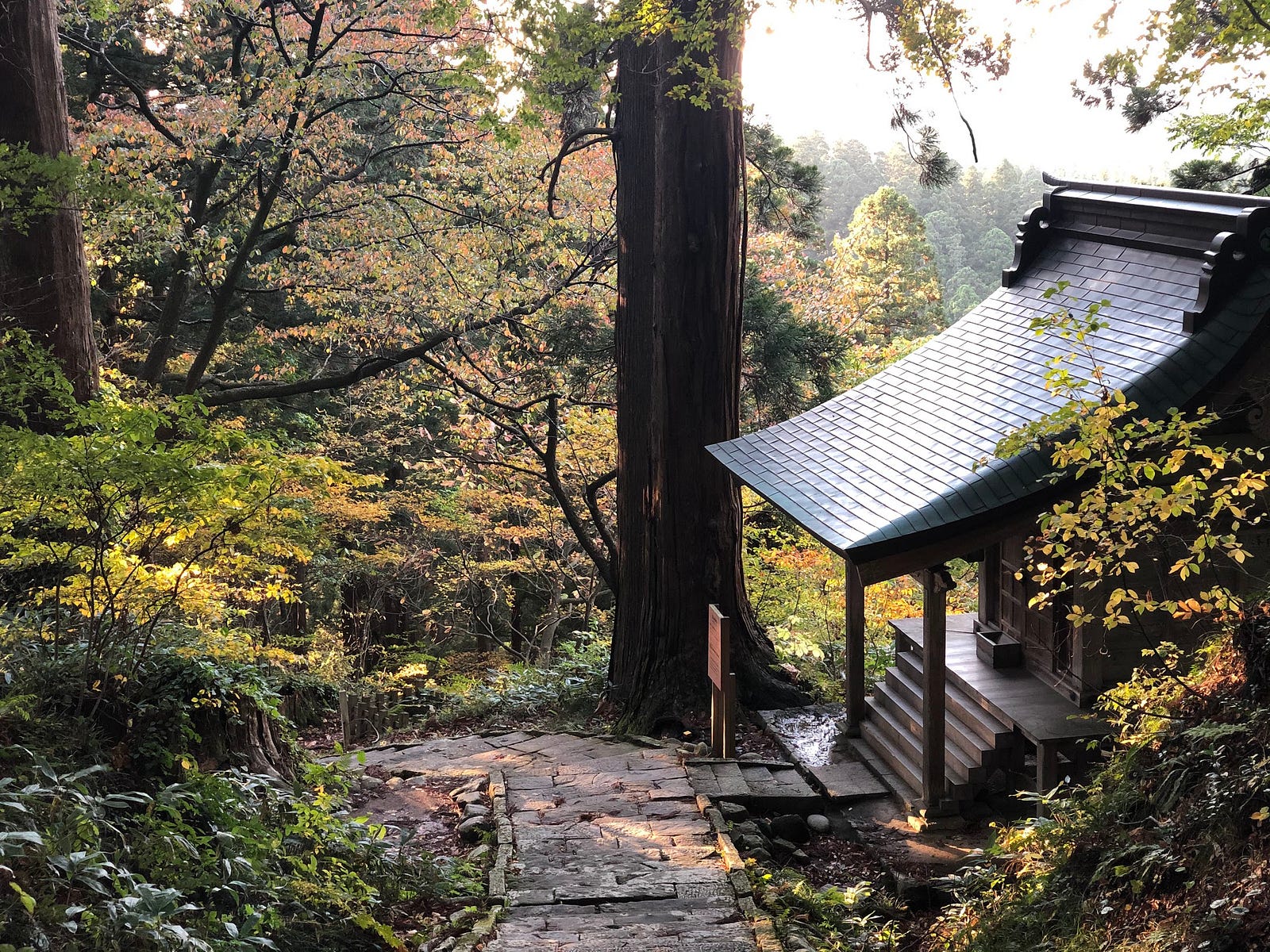
Locals in Yamagata are a different breed.
Providing not only the most beautiful backdrop known to man, but also a source of sustenance for millennia, mountains have a say in almost every aspect of the lives of the people of Yamagata.
So much so, the word Yamagata literally means ‘mountain shape’. Or, as we like to say, ‘made of mountains’.
Why 100 Mountains?
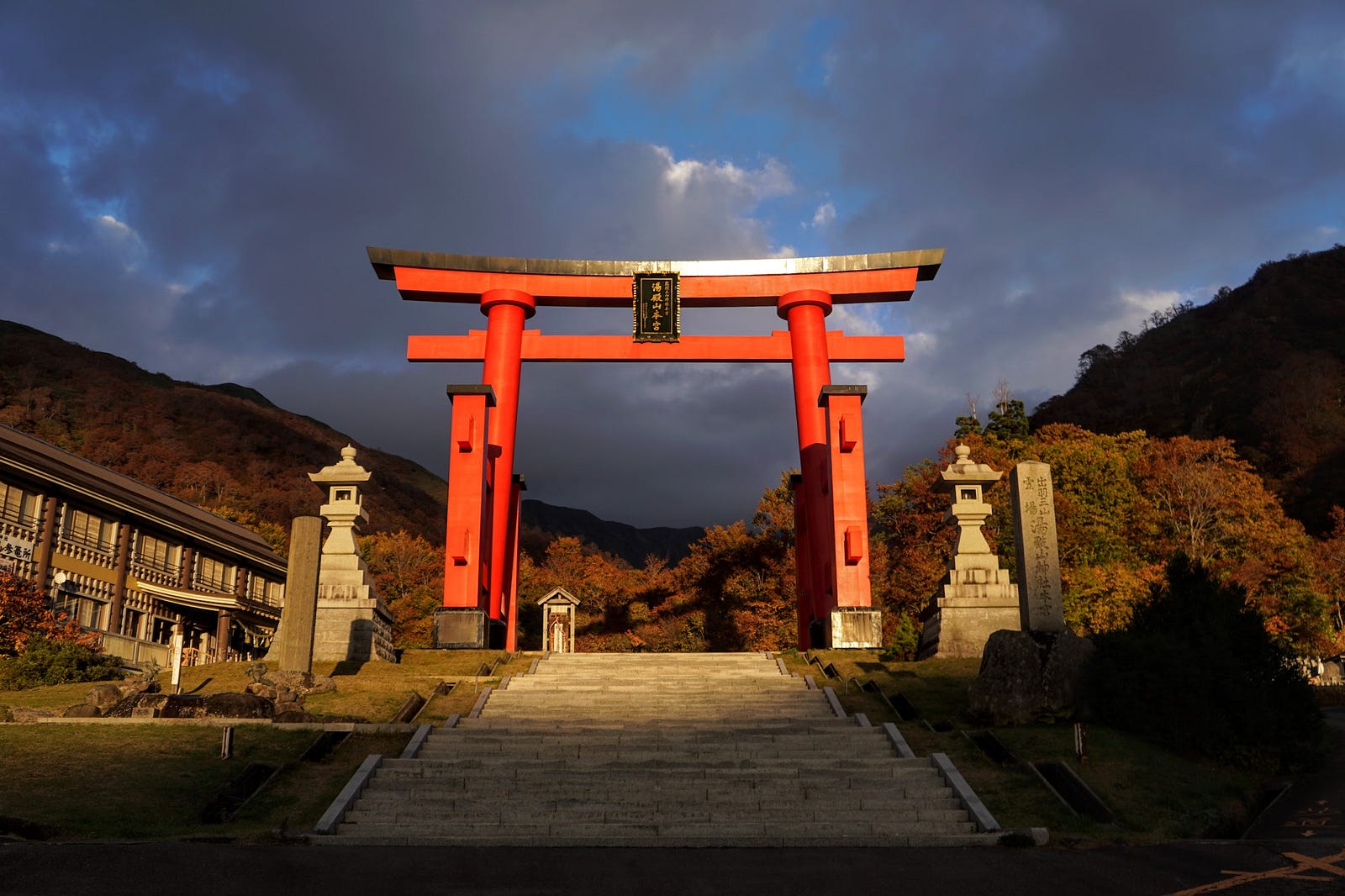
In 1964, mountaineer and author Fukada Kyuya published Hyakumeizan, One Hundred Mountains of Japan.
This book has since become a cult classic.
It was so popular, in fact, even the current Emperor Naruhito is a major fan.
Not to be outdone, in 2016 Yamagata Prefecture set about creating their own list of 100 famous mountains. In the process, they whittled down some 2,774 peaks into a top 100.
I’m climbing them all.
And I’d love you to join me!
(And yes, Yamagata does have that many mountains!).
Criteria for choosing the mountains of Yamagata
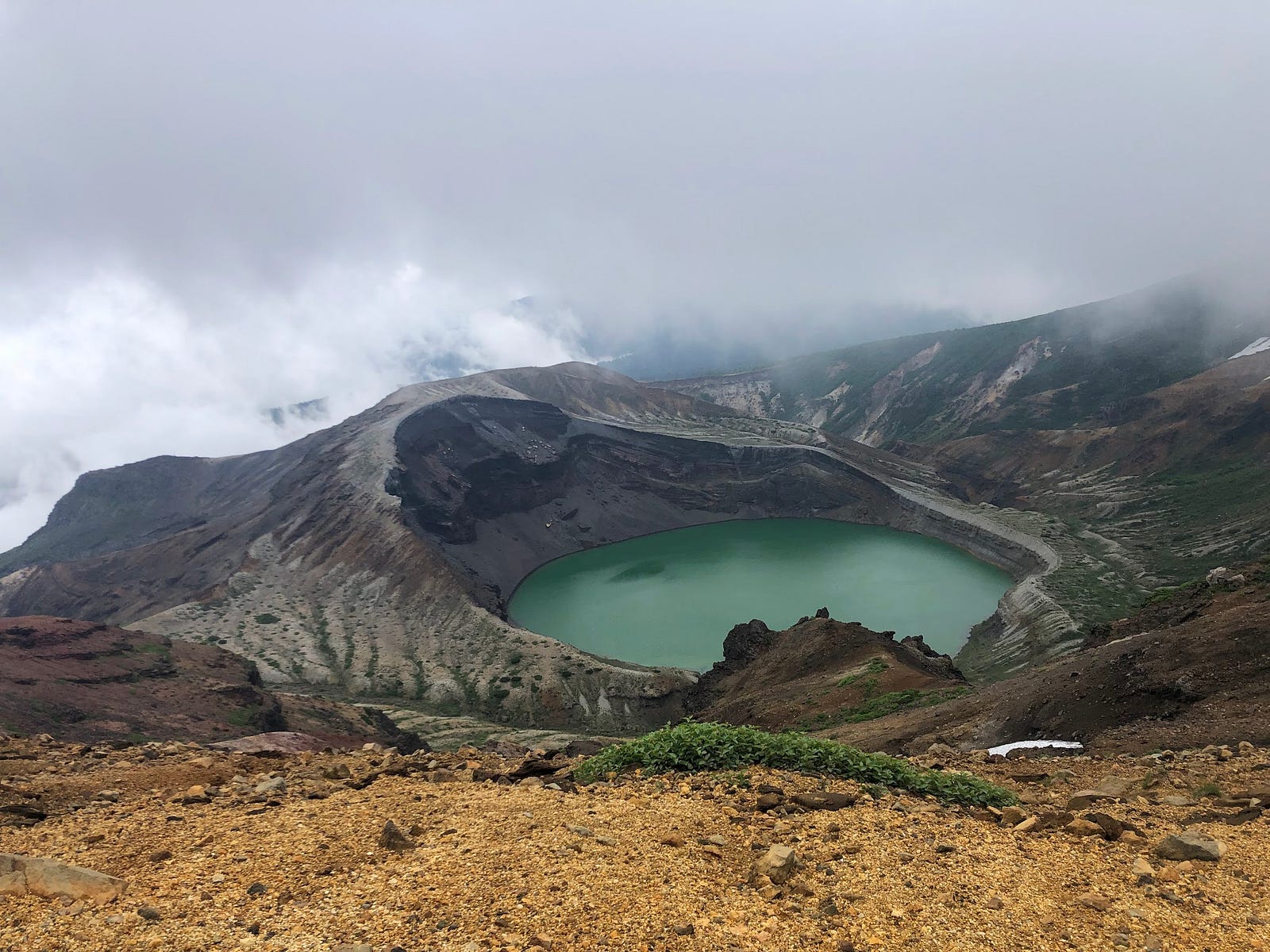
Fukada chose the original 100 famous mountains of Japan based on three criteria:
- Grace
- History
- Individuality
In contrast, locals in Yamagata Prefecture selected their list according to:
- Number of visitors to the mountains, starting with locals
- Mountains that play a considerable role in the lives of locals
- Mountains with great views or other special appeal worth sharing with the world
Fukada’s mountains versus Yamagata’s
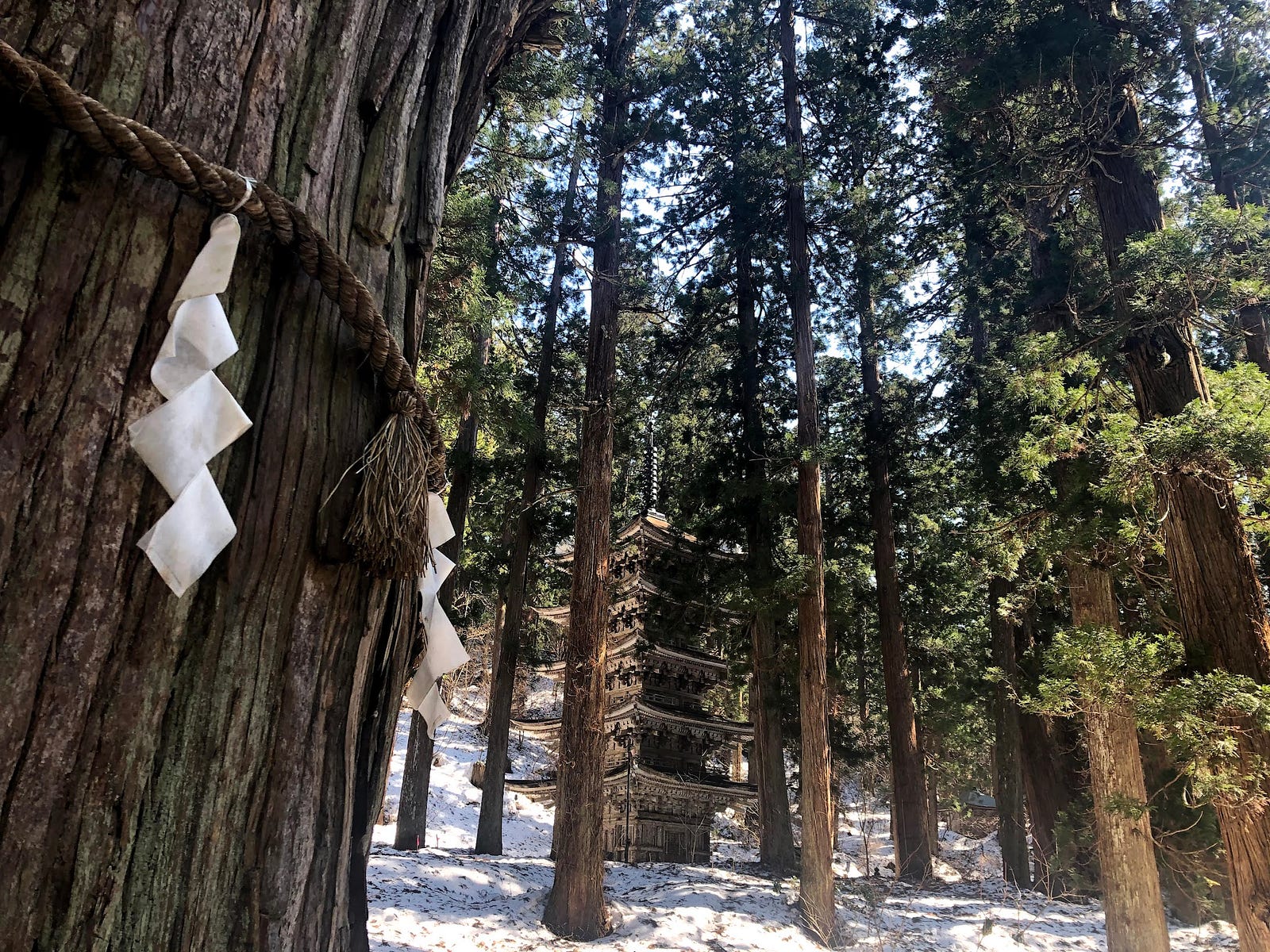
From the outset, Fukada’s list is obviously more objective. Not only are we talking about Japan as a whole, Fukada purposely didn’t include any mountains below 1,500 m (4921 ft.). Nor did he feel the need to ask locals how they feel about their mountains.
As a result, if you’re coming for traditional mountaineering, Yamagata’s list may sorely disappoint you.
Only four of Yamagata’s famous mountains are over 2,000 m (6562 ft.). Plus, only six Yamagata mountains appear in Fukada’s original 100.
Should that bother us?
Not in the slightest.
You see, what the mountains of Yamagata lack in stature, they more than make up for with an intriguing culture.
Let me show you.
The Mountains of Yamagata
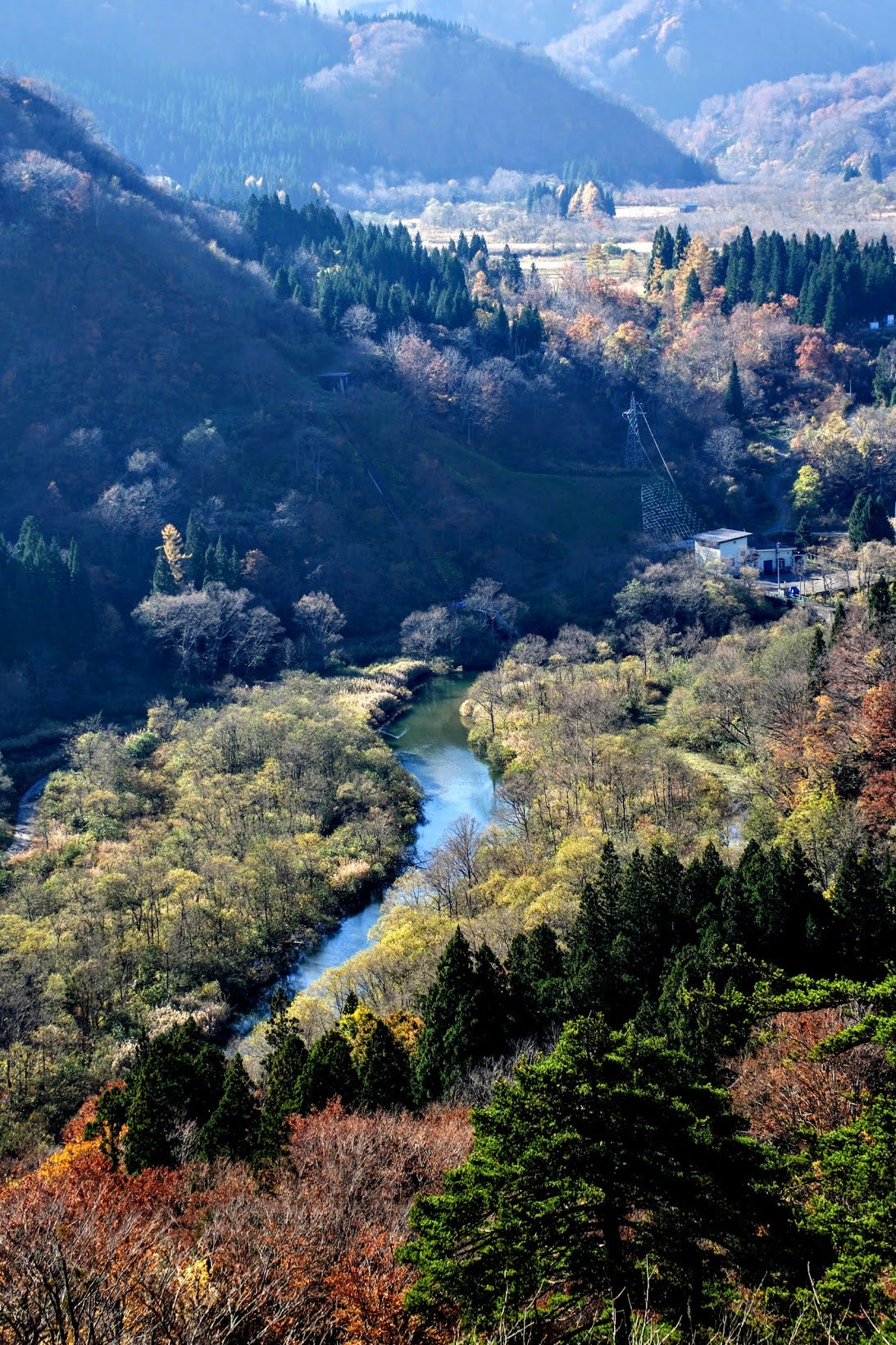
While exploring the 100 Famous Mountains of Yamagata, I found:
- Mountains shrouded in myth and legend
- Scenes of some of Japan’s fiercest battles in the former Mountain Castles
- Mountains on ancient routes, some confirmed to be over 1,200 years old
- Mountains made famous through literature, such as Unbeaten Tracks in Japan by Isabella Bird
- Mountains with dilapidated abandoned buildings or even ruins
- Mountains famous for flora or fauna such as forests for Shinrinyoku, forest bathing, fields of rare alpine flowers, known breeding grounds for birds of prey, or mountains practically made for flower viewing (Sakura Cherry Blossoms)
The list goes on
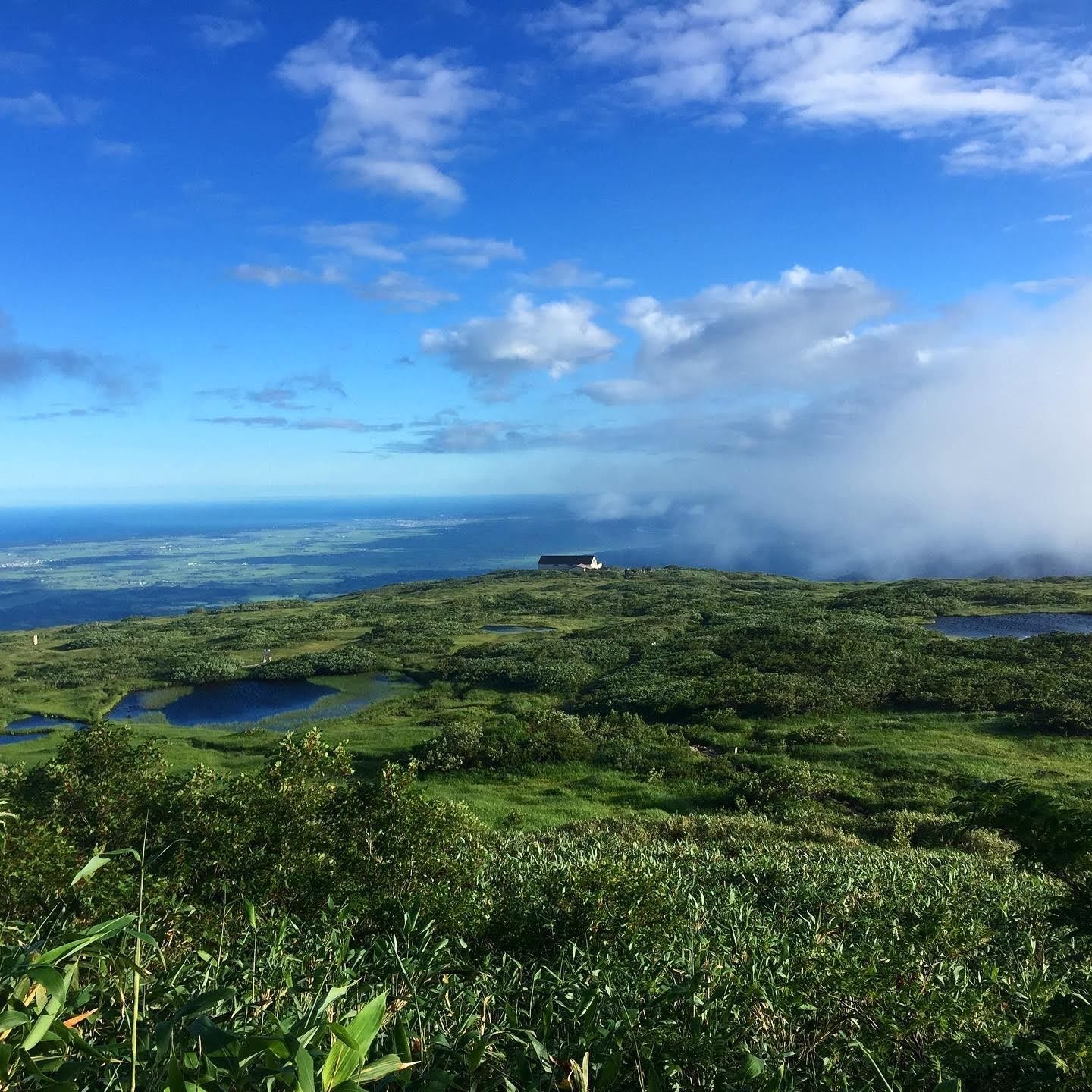
- Mountains covered in awe-inspiring waterfalls
- Volcanoes
- The tallest peak entirely in The Tohoku Region: Chokai-san
- Mountains open for winter hiking (snowshoeing)
- Mountains famous for wetlands, and all the creatures that come with them (including the world’s smallest dragonfly!)
- As a yamabushi, I would be remiss not to include Shugendo mountains used for yamabushi training. Besides the Dewa Sanzan where I train, there are multiple peaks used for ascetic practice, including one that backs on to the famous Yamadera
- And of course, it wouldn’t be Yamagata without some mountains featuring Onsen Hot Springs. Yamagata has a whopping 507 onsen facilities, at least one in each and every municipality. You truly are spoiled for choice!
Run to the hills - Of Yamagata
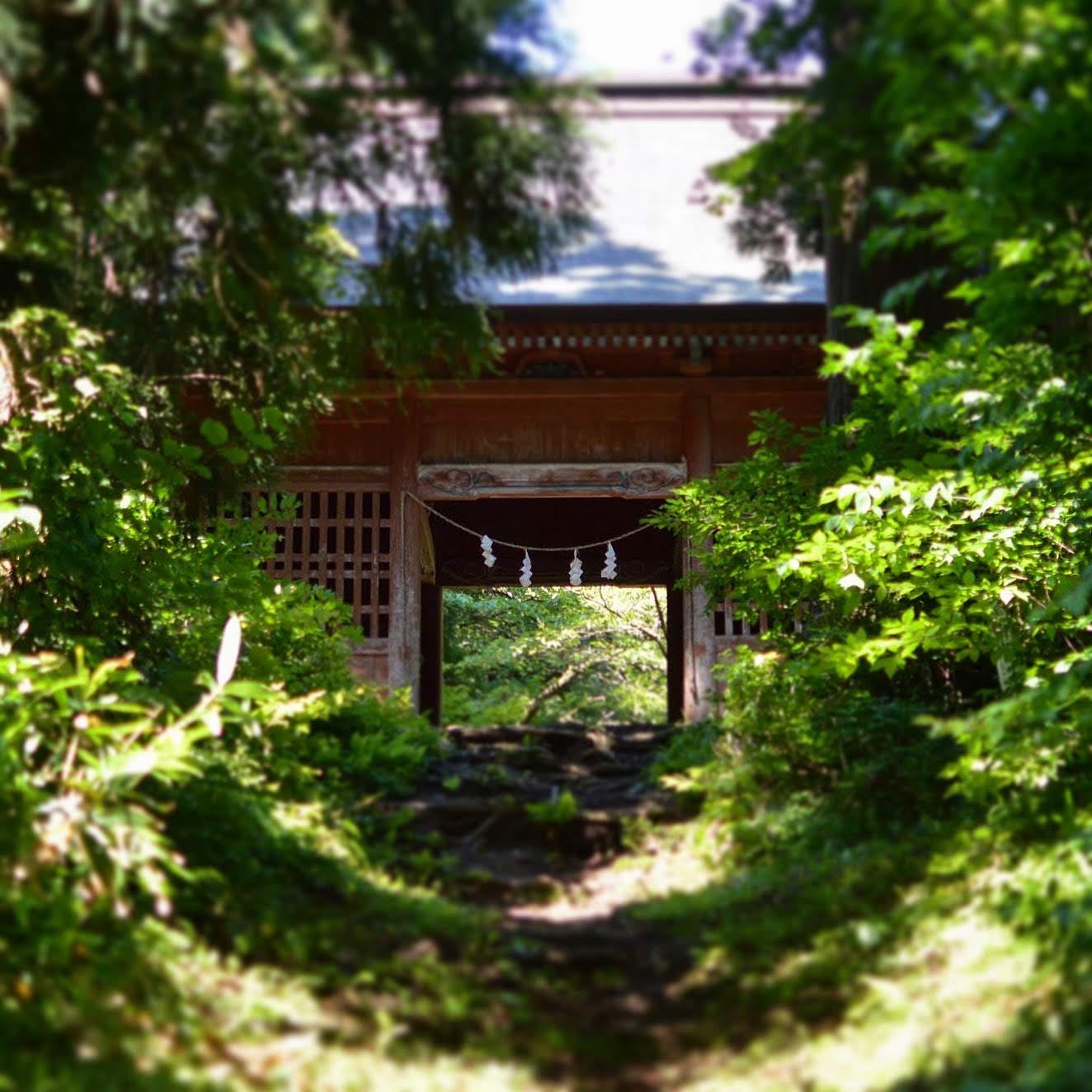
We know the name Yamagata means ‘mountain shape’. In olden times, however, the name used another Kanji character altogether; 方, kata ‘in the direction of’.
Yamagata wasn’t ‘shaped by mountains’, it was ‘go to the mountains’.
But not just any mountains.
Our mountains.
In a country full of mountains, that says a lot.
And there was one extra special person in particular who made an extra special effort to visit the mountains of Yamagata:
Haiku Poet Matsuo Basho

The man who practically single-handedly put Haiku poetry on the map, Matsuo Basho.
While in Yamagata, those days known as Dewa Province, Matsuo Basho visited numerous spots including Risshakuji Temple at Yamadera, and his main destination, The Dewa Sanzan mountains.
In the process, Matsuo Basho created Japan’s definitive collection of Haiku poetry and travel journal: The Narrow Road to the Deep North.
Japan Heritage Sites in Yamagata Prefecture
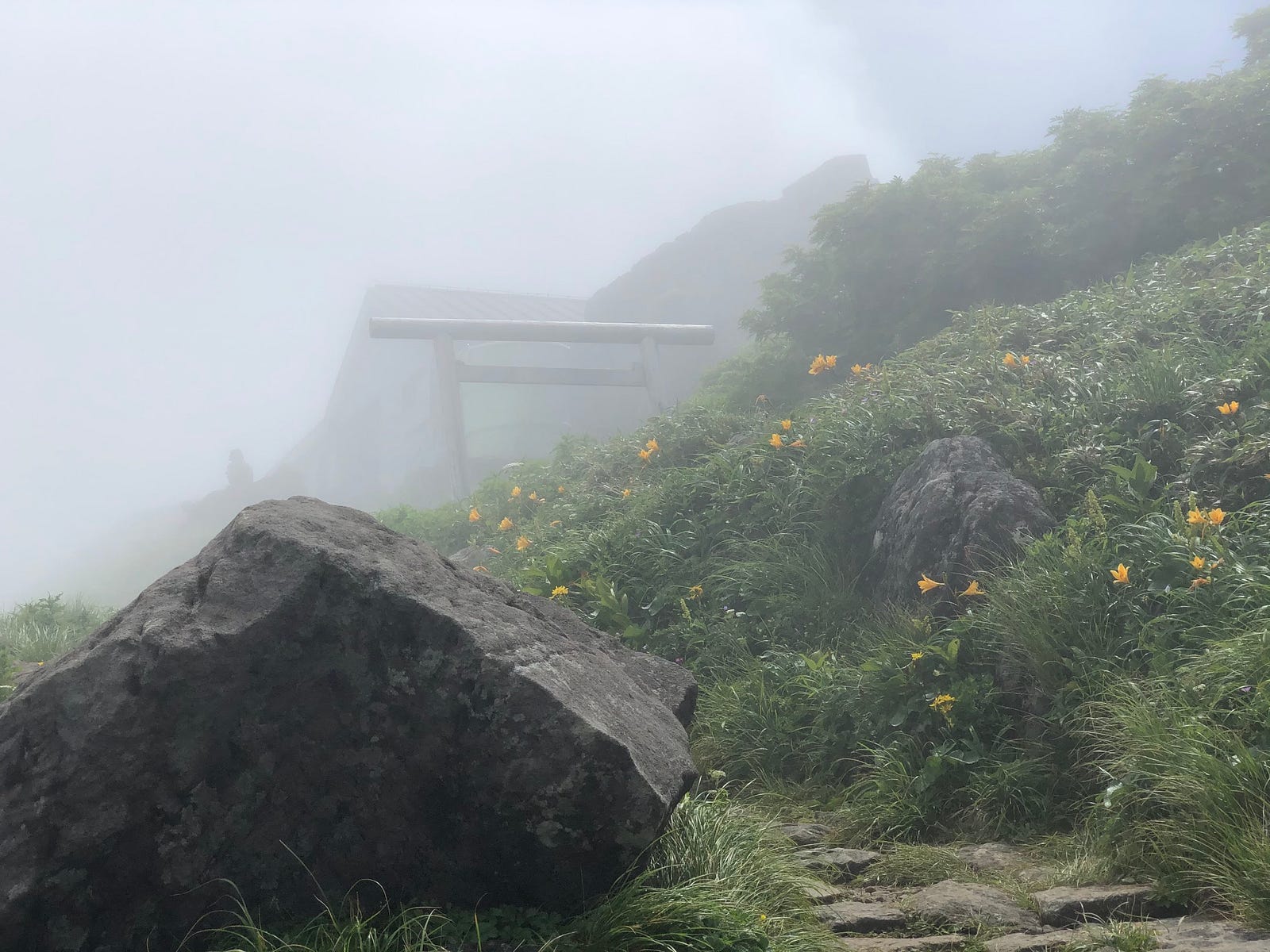
Plus, Matsuo Basho is lucky to have witnessed three of Yamagata Prefecture’s four Japan Heritage sites.
First is the mountain temple locals convinced Matsuo Basho to visit, Yamadera in Yamagata City.
Then, of course, another of Matsuo Basho’s destinations; the three mountains of Dewa, otherwise known as the Dewa Sanzan.
The Kitamaebune North Sea Route that utilised the Mogami River was the reason Yamagata developed into a lead rice and safflower producer. It was also one reason why Edo, modern-day Tokyo, became the biggest city in the world during the 18th century.
Lastly, Tsuruoka City’s Samurai Silk; a silk industry born on the backs of former Samurai. These Samurai created Japan’s northernmost silk industry that still does the whole process from planting the mulberry trees to silk production until this day.
These last three sites all belong to the Shonai Region on The Sea of Japan coast, an impressive feat for a place about the size of Tokyo’s 23 wards.
UNESCO Creative City of Gastronomy
In addition, Yamagata Prefecture is home to Tsuruoka, Japan’s first UNESCO certified Creative City of Gastronomy. A large reason for this certification is the mountains that provide abundant nutrients for the best possible produce grown in the area.
Welcome to Water World
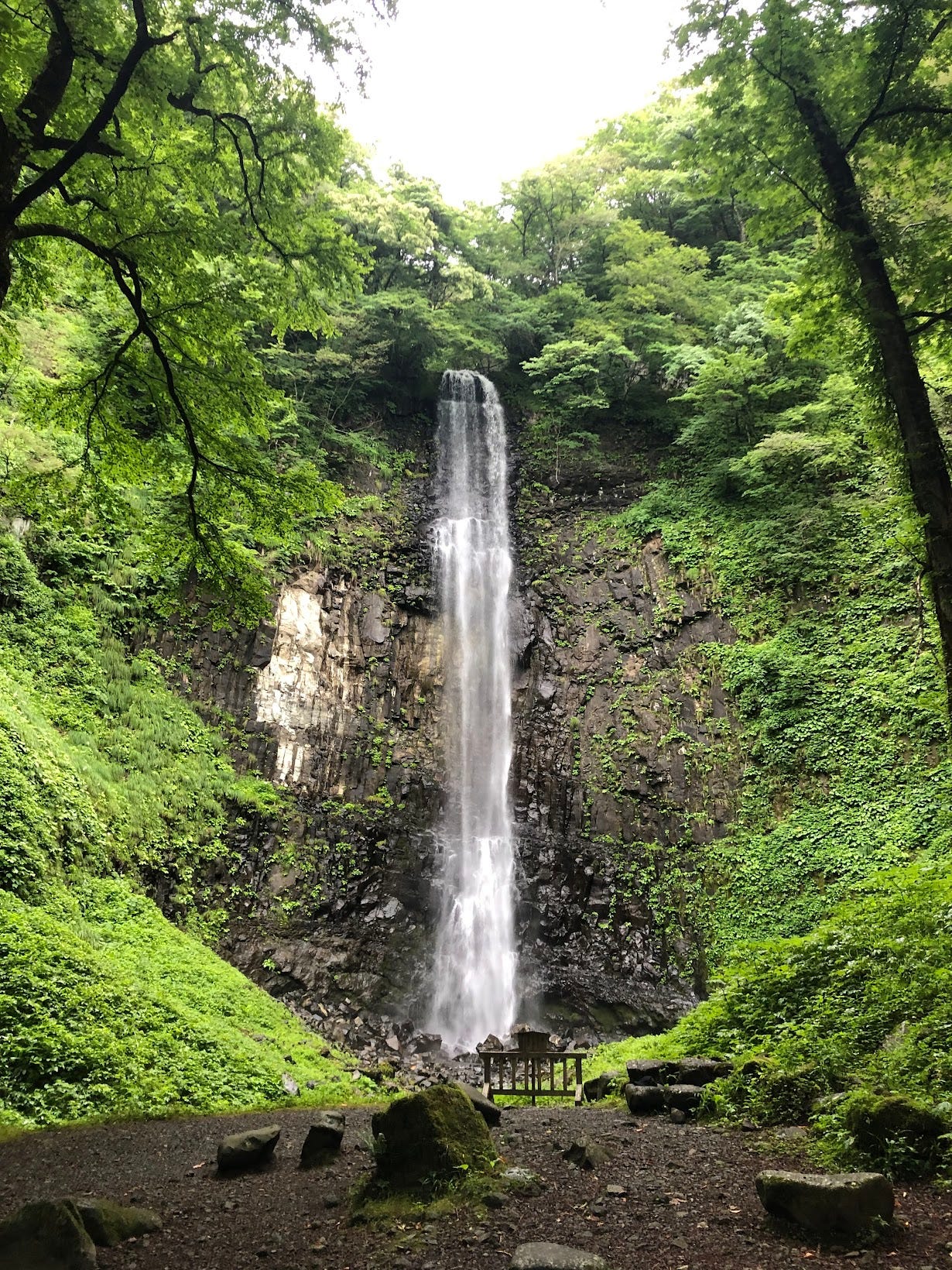
With all these mountains, Yamagata is also a source of some of the freshest water in the whole of Japan.
Yamagata Prefecture is famous for having the highest number of waterfalls (over 5 m in height) of any prefecture.
In fact, Chokai-san, with the highest precipitation of any mountain in Japan also has the most waterfalls of any mountain in Japan.
READ MORE: The Astounding Waterfalls of Chokai-san - Tim Bunting
The Longest River in One Prefecture: Mogami River
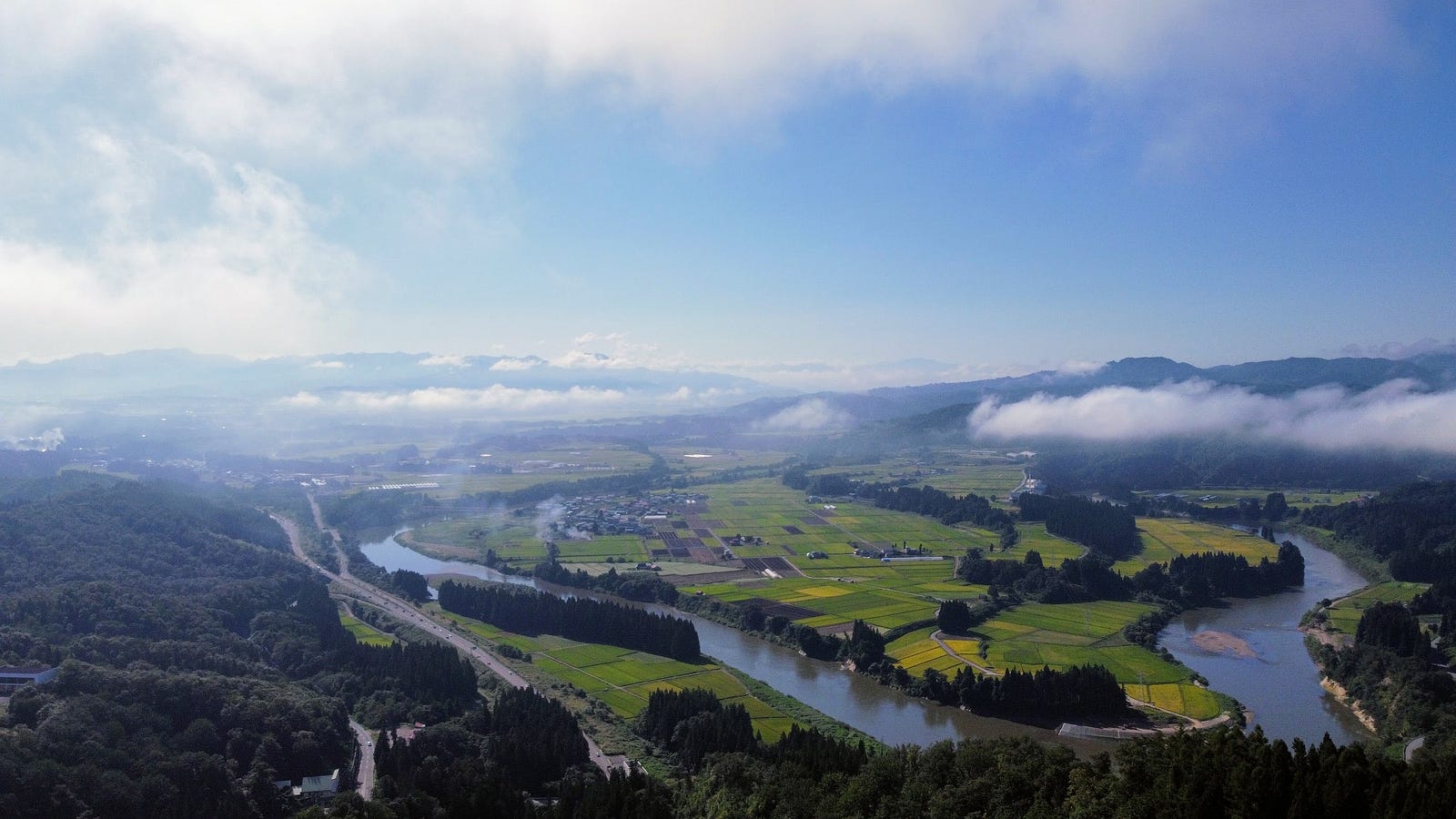
Further downstream, at 224 km, the Mogami River is the longest contiguous river in one prefecture. The Mogami River played a massive role in transporting rice and safflower to Sakata City on the coast.
Coupled with the aforementioned Kitamaebune North Sea Route, Yamagata Prefecture played a direct role in the development of Edo, modern-day Tokyo. Ships sailed all the way around to Edo full of Yamagata’s finest rice, sake, and safflower.
Terms for Mountain in Japanese
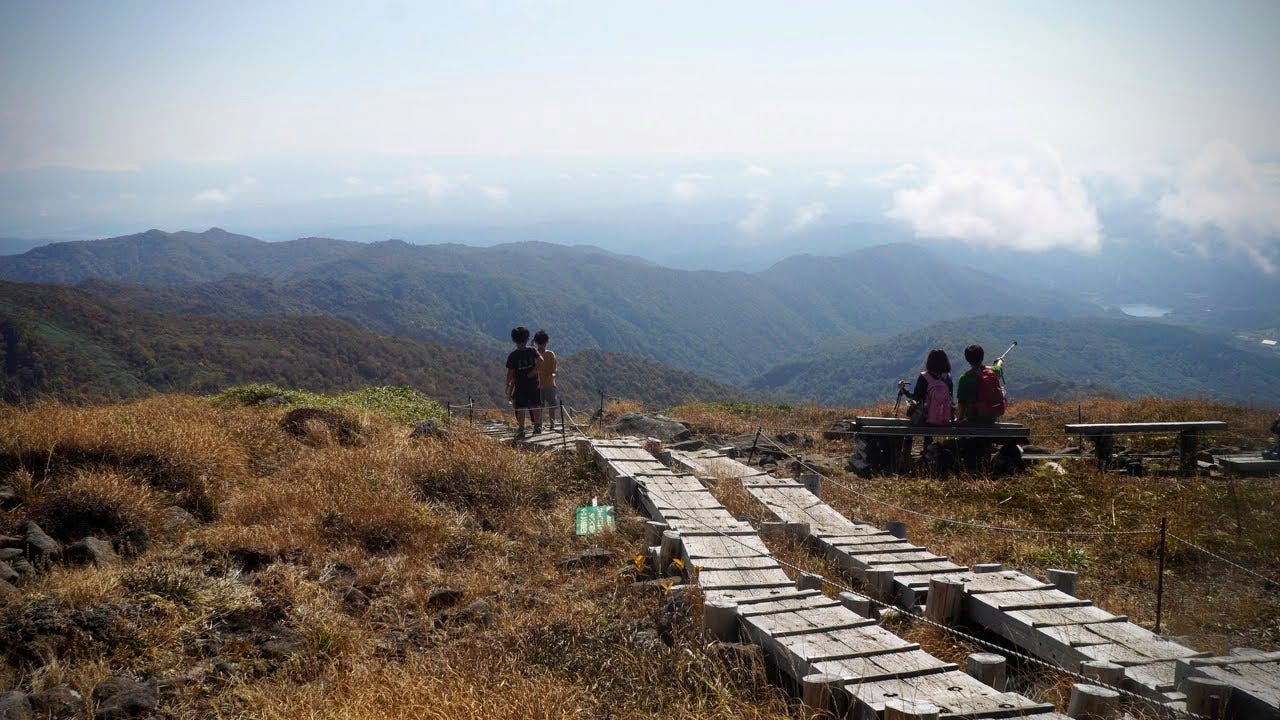
In Japan, mountains are so common they have multiple words for them:
- Yama (山, e.g. Fuji-yama), is probably the most well-known term for mountain in Japanese. Yama can also be read as san (e.g. Haguro-san), and sometimes voiced as zan, (e.g. Chokai-zan).
- Then there are terms like mine (峰, also 峯 and 嶺, e.g. Kumanonaga-mine), for peak, also read ho, and sometimes fu or pu.
- Take (嶽, or its simplified version 岳, e.g. Shojiga-take), voiced as dake (e.g. Atsumi-dake), or also read as Gaku, means ‘a tall and precipitous mountain’.
- Plus, I’ve recently discovered many cases of mori (森), usually meaning forest, also meaning mountain (e.g. Futatsu-mori or Kagikake-mori).
- Now, here I’m getting a bit picky, but there is also ten, (巓 e.g. Higashidai-ten), which refers specifically to a summit, rather than a mountain as a whole.
READ MORE: Why this mountain is EVERYWHERE in Japan - Murayama Ha-yama (Mt. Hayama (Murayama)) - Tim Bunting
My Favourite Yamagata Mountains So Far

Until now (Autumn 2023), I have summited a third of the 100 Famous Mountains of Yamagata. Here are my top five:
- Arakura-yama: A mountain with views of cherry blossoms, the Sea of Japan, and the tiny port town of Yura, all topped off with a mystical forest shrine.
- Okina-san: A mountain on the edge of Yamagata Prefecture with a scintillating back story that keeps you intrigued at every turn on the misty peak.
- Maya-san: A former Shugendo mountain with a legendary backstory, and buried yamabushi treasure.
- Yozo-san: Part of an ancient trail between the eastern and western coasts of northern Japan with a crazy backstory full of unique places to explore like frog ponds and phantom falls.
- Taizo-san: Just an all-round amazing hike through the autumn leaves.
The Mountains of Yamagata By Height
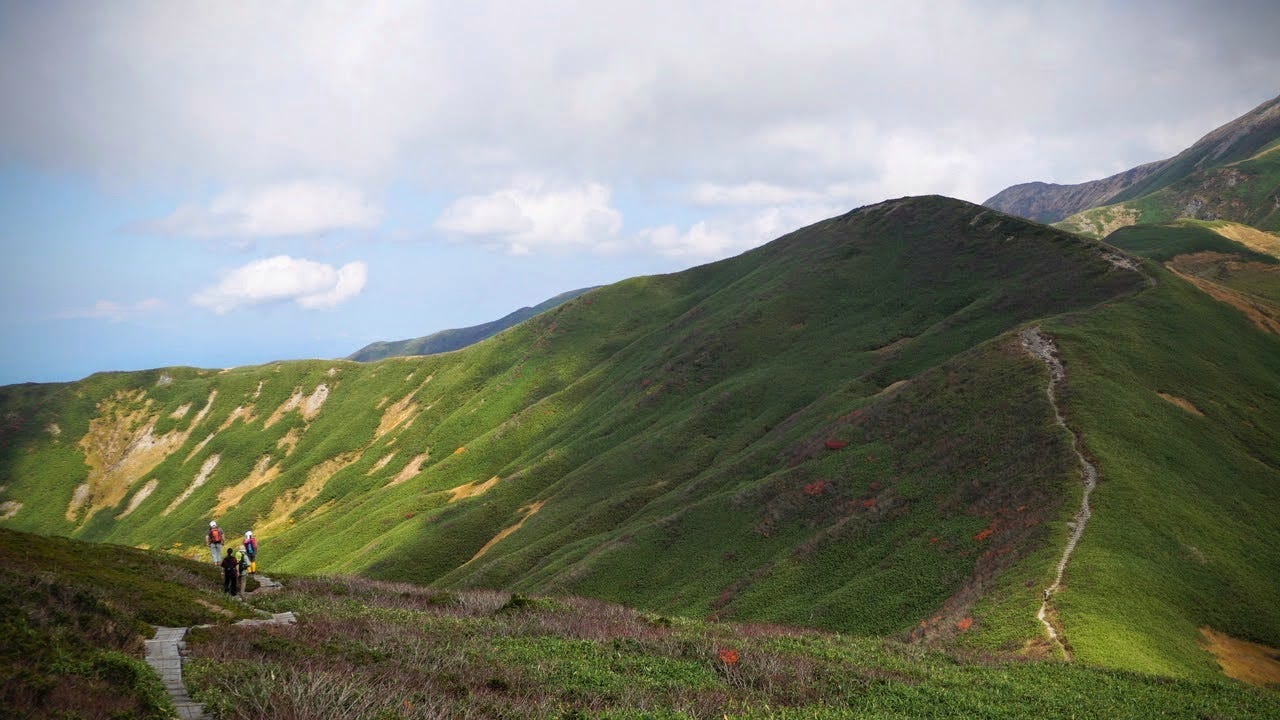
Unlike Fukada’s list, The 100 Famous Mountains of Yamagata list includes quite a few mountains of less than 1,500 m in elevation. In fact, Kashiwagi-yama at 58 m is the lowest mountain on the list, and is a bit of a stretch to call a mountain.
However, Yamagata’s list does include 45 mountains above 1,000m, and four above 2,000m. The tallest of which, Chokai-san at 2236m, is the tallest mountain entirely in the Tohoku region.
READ MORE: All 100 Famous Mountains of Yamagata separated by height
The Mountains of Yamagata By Region
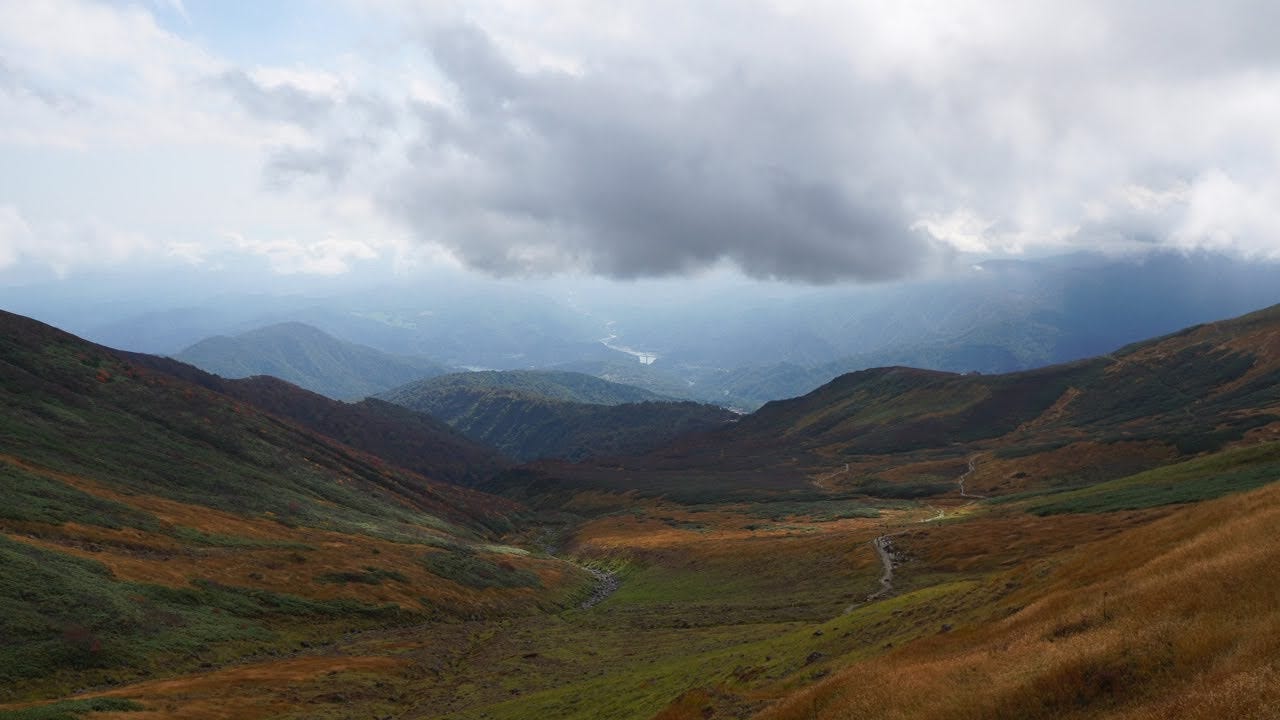
There are four main regions in Yamagata Prefecture, from north to south:
- The Shonai Region along the Sea of Japan coast bordering Akita and Niigata Prefectures
- The Mogami Region to the northeast bordering Akita and Miyagi Prefectures
- The Murayama Region in the centre of the prefecture bordering Miyagi Prefecture
- And The Okitama Region to the south bordering Miyagi, Fukushima, and Niigata Prefectures.
READ MORE: Mountains in Yamagata Prefecture by Region
Yamagata’s Mountain Ranges
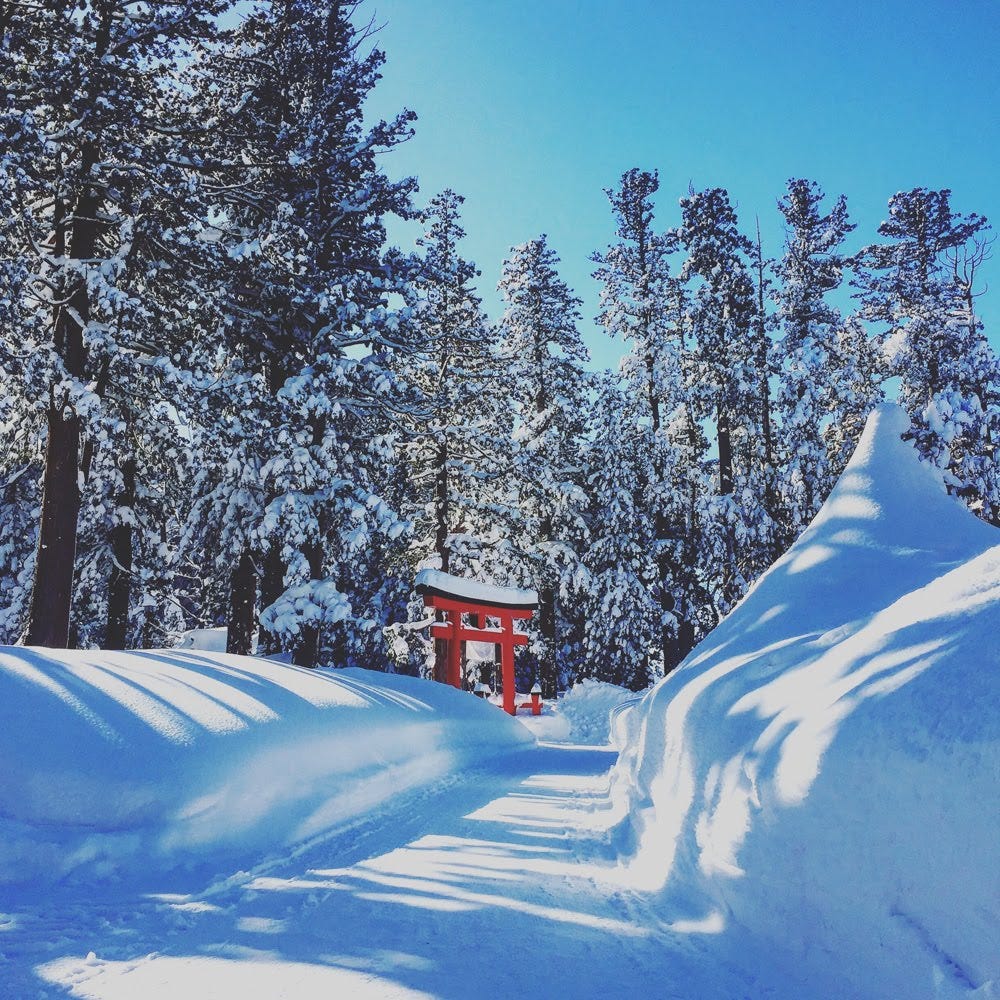
Understandably, there are also numerous mountain ranges throughout Yamagata Prefecture:
- Dewa Sanzan
- Bandai Asahi National park
- The Ou Mountains
- The Shonai Alps
- The Kamuro Renpo
- The Ide Renpo
- The Zao Renpo
- The Asahi Renpo
- The Azuma Renpo
- The Funagata and Goshozan Renpo, to name a few.
READ MORE: Mountain Ranges in Yamagata Prefecture
Yamagata’s Mountains by Hiking Time
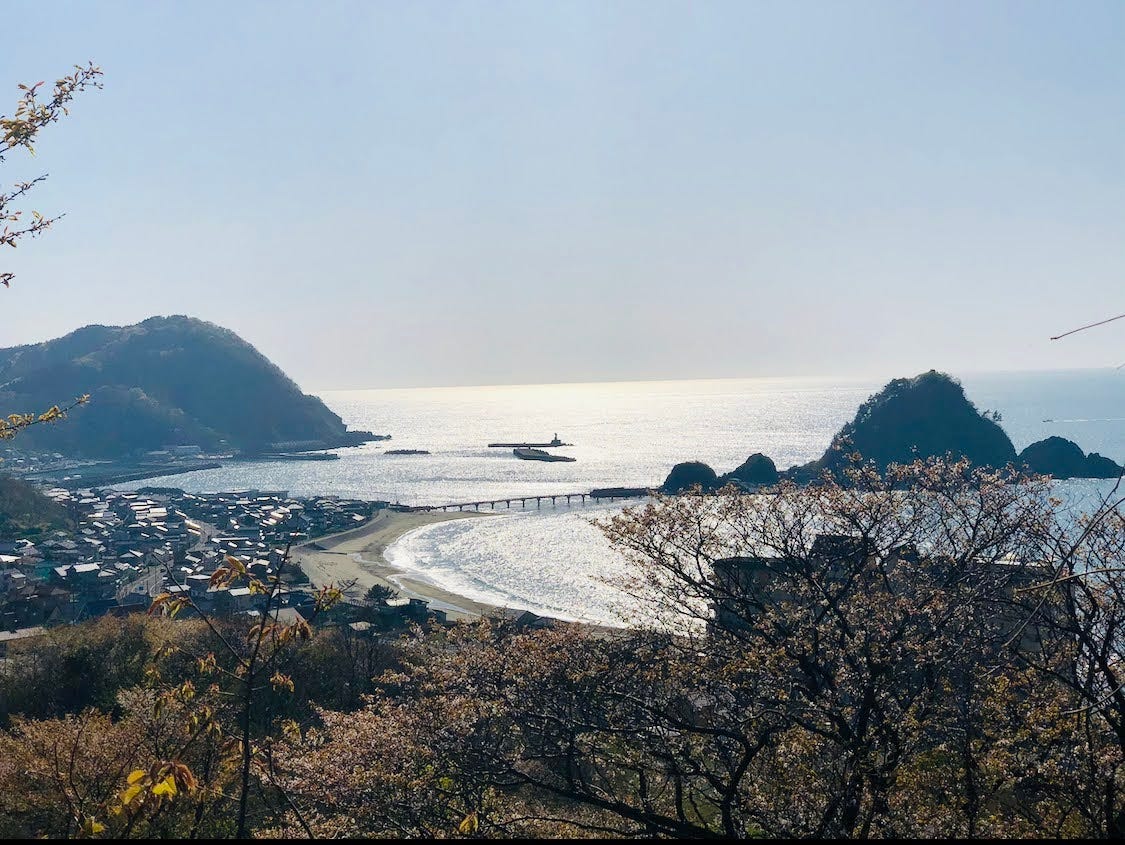
From 20-minute hikes to full-blown overnighters, Yamagata Prefecture offers hikes for any skill level and duration.
READ MORE: Mountains of Yamagata by Hike Time
Featured articles
If that’s not enough, I’ve prepared a few articles to help navigate your way around the 100 Famous Mountains of Yamagata.
Here are but a few:
- The Astounding Waterfalls of Chokai-san
- The Creepy Legend of Tenaga Ashinaga
- The Three Best Yamagata Mountains to hike in 2023
- Winter hikes in Yamagata Prefecture
The 100 Famous Mountains of Yamagata Project
Thanks for reading this far. If you want to learn more, or to follow my progress on the 100 Famous Mountains of Yamagata Project, be sure to sign up for my newsletter. Also check out my YouTube channel, and I post on Twitter, Instagram, and LinkedIn often. Would be great to see you there.
ENJOYED THIS? HAVE MORE.
MOUNTAINS OF WISDOM
Subscribe to my yamabushi newsletter
RECENT BLOG POSTS
YAMABUSHI BLOG POSTS
RANDOM POSTS
Sakata City, Yamagata, Japan





